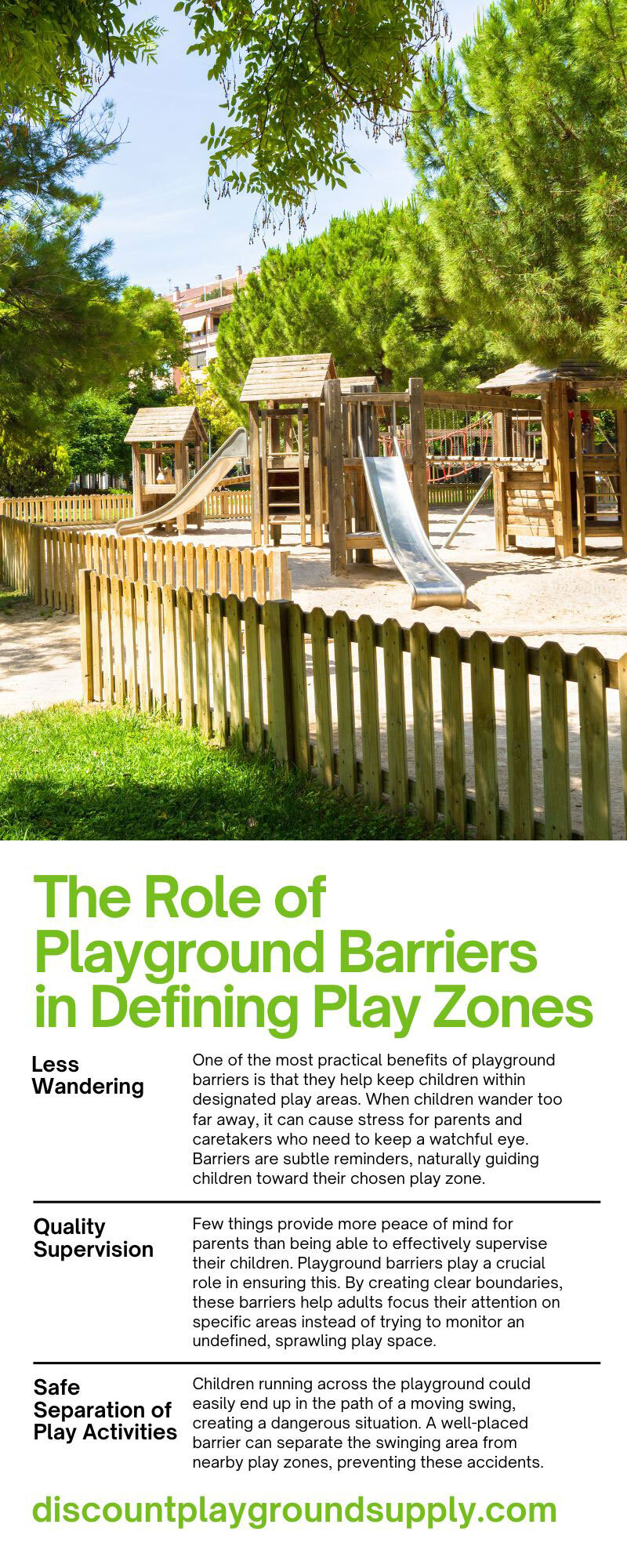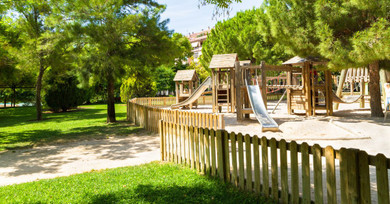Playgrounds are spaces where children can explore, imagine, and build lifelong memories with friends and family. However, creating a playground that’s fun and safe requires thoughtful design, including knowledge of the role of playground barriers in defining play zones. These borders, whether wooden, metal, or plastic, remove the guesswork for parents and children alike, making it clear where specific play zones begin and end. With well-placed barriers, you can create a space that encourages freedom and structure.
Ahead, learn more about what playground barriers do and why they’re integral for your park’s play zones.
Less Wandering
One of the most practical benefits of playground barriers is that they help keep children within designated play areas. When children wander too far away, it can cause stress for parents and caretakers who need to keep a watchful eye. Barriers are subtle reminders, naturally guiding children toward their chosen play zone.
For example, a toddler playing in a sandbox might notice the boundary created by a low barrier and understand that the play area ends there. Meanwhile, parents can relax, knowing the barriers prevent their child from venturing too far out of sight. By incorporating well-placed playground barriers, you create a more contained space where kids can freely play without getting too far out of bounds.
Quality Supervision
Few things provide more peace of mind for parents than being able to effectively supervise their children. Playground barriers play a crucial role in ensuring this. By creating clear boundaries, these barriers help adults focus their attention on specific areas instead of trying to monitor an undefined, sprawling play space.
For instance, barriers around climbing frames or play structures are clear visual markers, helping parents quickly identify where their child is and where potential risks might be. In crowded playgrounds, these defined zones reduce confusion.
Safe Separation of Play Activities
Playgrounds often cater to children of various ages and abilities, which means different play activities must coexist harmoniously. Playground barriers ensure children don’t accidentally disrupt ongoing activities or find themselves in areas meant for older kids.
Consider a swing set, for example. Children running across the playground could easily end up in the path of a moving swing, creating a dangerous situation. A well-placed barrier can separate the swinging area from nearby play zones, preventing these accidents.
Similarly, separating areas for toddlers from those designed for older kids means everyone has a safe place to play at their own pace. The role of playground barriers in defining play zones is essential for creating a space that works for its diverse users.
Define Social Rules
Playgrounds are hubs for social interaction. Through play, children discover how to navigate group settings, share resources, take turns, and communicate effectively with peers. These foundational skills, often learned unconsciously, serve them throughout their lives.
By visually dividing different play zones, barriers encourage structured and cooperative interactions while also allowing for moments of individual exploration. For example, a fenced-off basketball court signals a space for organized team play where children can focus on collaboration, strategy, and competition as a group. On the other hand, a sandbox or an open grassy area provides a clear cue that it’s a zone for free, imaginative play where kids can dig, build, or create without restriction.
These divisions regulate the flow of activity and reduce potential conflicts. Children gain a sense of order and boundaries, understanding what’s acceptable in one area versus another. This structure is especially valuable in helping younger kids adapt to social norms, such as waiting for their turn on a swing or respecting personal space in quieter areas.
At the same time, playground barriers support the balance between structured activities and imaginative free play. Whether it’s a climbing wall that encourages problem-solving as a team or a quiet nook where kids can retreat for solo play, these designated spaces foster a variety of social experiences. By providing gentle guidance through spatial design, playgrounds become environments that help children navigate the complexities of social dynamics so that every child has the opportunity to learn and thrive.
Promoting Accessibility and Inclusivity
Playground barriers also make play areas welcoming and inclusive for children of all abilities. By defining clear pathways and entry points, barriers make it easier for children who use mobility aids, like wheelchairs or walkers, to access different areas of the playground. Additionally, barriers can include features such as sensory textures or contrasting colors, which assist children with visual or sensory impairments in navigating the space.
Easier Maintenance
Playground barriers make maintenance simpler by keeping everything in its place and reducing the chaos that often comes with active play areas. These barriers are essential for containing mulch, sand, or other loose materials within designated play zones, preventing them from spreading onto walking paths or grassy areas.
Barriers also protect high-traffic zones, such as areas around swings, slides, and climbing structures. By reinforcing these spots with durable, weather-resistant materials, barriers prevent excessive wear and tear on the surrounding surfaces, reducing the need for frequent repairs or replacements.
Better-Looking Space
Aesthetics may not be the primary reason for installing playground barriers, but they make a noticeable difference. A well-designed playground is a point of pride for your community, and barriers can elevate the entire space by adding organization and visual appeal.
Modern playground barriers come in a variety of styles and materials to suit your playground’s theme. Vibrant colors, natural wood finishes, or sleek metal designs enhance the overall look of your playground. By investing in attractive, practical playground barriers, you’re not just defining play zones; you’re creating a welcoming space that children and parents will want to visit time and again.
Build a Better Playground Experience
From enhancing safety to improving aesthetics, a playground barrier upholds your playground’s environment. These borders keep children safe, guide social dynamics, simplify maintenance, and give your playground a polished, professional finish.
At Discount Playground Supply, we understand the value of a well-planned play space. That’s why we offer a range of high-quality playground barriers to help you create a playground that’s safe, functional, and visually appealing. Explore our selection of products today.


